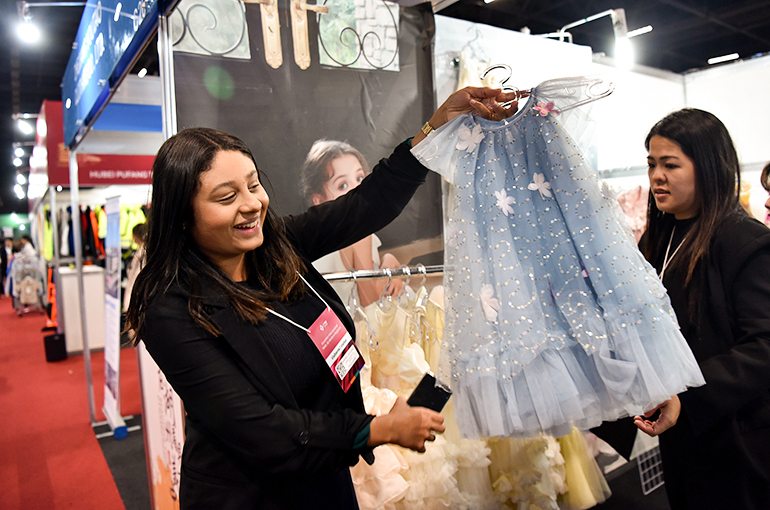 Chinese Kidswear Makers Push Overseas as Falling Birth Rate Shrinks Home Market
Chinese Kidswear Makers Push Overseas as Falling Birth Rate Shrinks Home Market(Yicai) Sept. 15 -- Chinese children’s apparel manufacturers are facing a shrinking market at home, as birth rates continue to tumble, and are increasingly venturing abroad for survival, reaching even into risky markets along the Russia-Ukraine border.
“The domestic kidswear market is expected to contract by more than 30 percent in the second half from a year earlier, judging from visitor traffic across different platforms,” Mou Hua, foreign trade director at a children’s apparel company in Huzhou, southeastern Zhejiang province, told Yicai.
Known as “China’s Kidswear Capital,” the town of Zhili in Wuxing district, Huzhou city, is home to over 14,000 children’s clothing manufacturers that churn out two billion garments a year and account for two-thirds of the national market.
“A shipment has just arrived at a bonded warehouse in Moscow and will be on sale by the end of this month. Another shipment for Thailand left on Saturday, Sept. 13 and is expected to arrive around the 20th,” Mou told Yicai. The company’s growth this year is primarily driven by overseas sales, with overall revenue expected to jump around 10 percent.
For Mou, even though global demand is cooling and there are economic headwinds, the international kidswear market is still more attractive than China’s both in terms of unit prices and profit margins.
After the company shifted its focus to exports three years ago, the management team joined a government-organized charter flight from Huzhou to Southeast Asia, where they soon established a foothold in the local wholesale market. Not long after that, they pivoted to Russia, with plans to build an overseas warehouse in the Kursk Oblast in western Russia.
Yao Dong, the founder of the company that Mou works at, spent this past winter in Kursk. Mou himself stayed there for nearly three months in the spring, handling the hiring and training of local staff. It took him almost a year to figure out how to invest in an unfamiliar region with a low level of market development.
Why Kursk?
While the risks of the Russia-Ukraine conflict are very real, with “air raid sirens going off every day,” risk often comes with reward, Mou said. Kursk is a border region, but it is also an important industrial and agricultural hub. It is home to one of the world’s largest iron ore production sites, has a relatively dense population and warehouse rental costs are only around 60 percent of what they are in and around Moscow.
Once goods arrive at their Russian warehouse, the company sells them through local e-commerce platforms. By hiring Russian staff who speak Chinese, operations are not a major issue. However, over the past year, high costs in e-commerce and logistics have made the team realize that the firm can only make a profit if the final retail price is at least triple the value of the goods, Mou said.
This means that relying only on the “overseas warehouse + local e-commerce” model in these emerging markets is not a sustainable option. Rather, a two-pronged approach of pursuing e-commerce while also opening up offline wholesale channels is essential.
Having established a foothold in Southeast Asia and Russia, Mou and his team plan to expand further by setting up warehouses in Japan, South America and other locations. Beyond their own business, they also hope to allocate some warehouse space as shared facilities to support other Chinese brands with similar ambitions of “going global.”
Editor: Kim Taylor